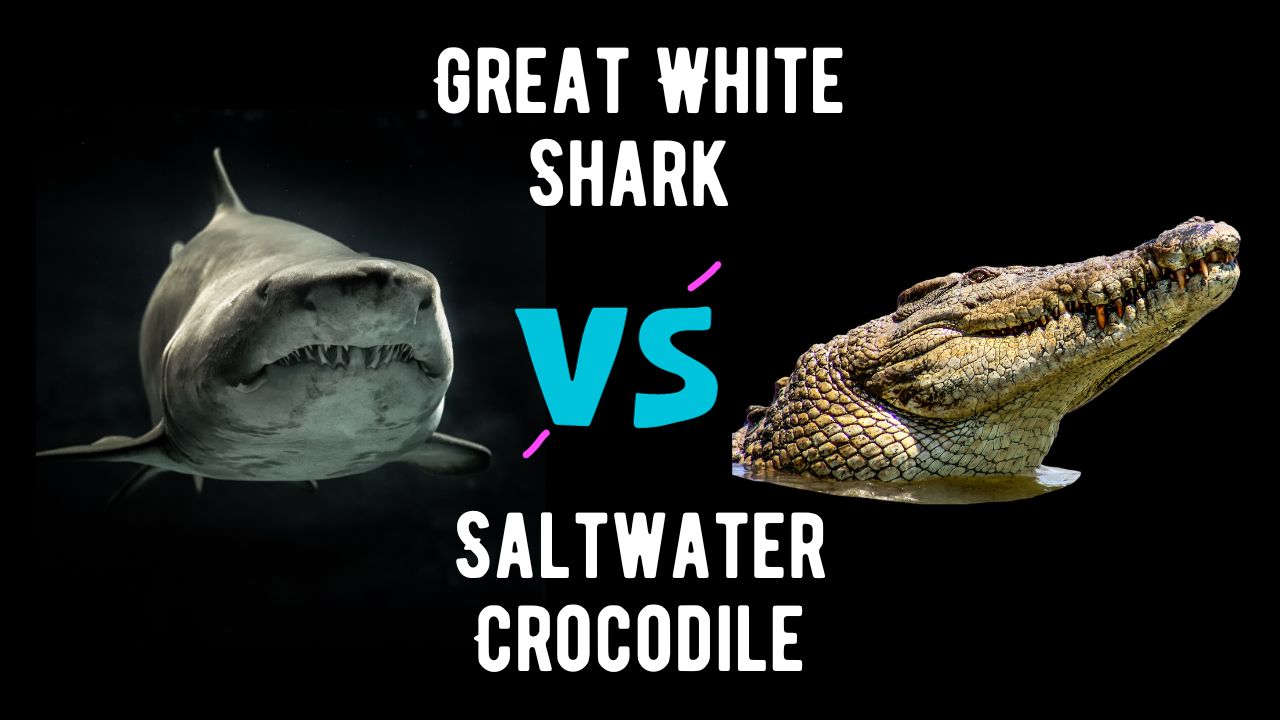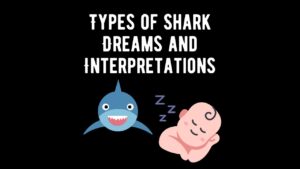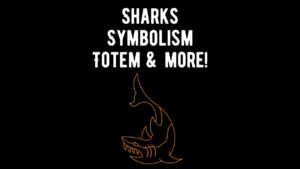
The great white shark and the saltwater crocodile are two of the most formidable predators in their respective domains—ocean and estuarine habitats. Both command respect and fear, possessing unique adaptations that make them apex predators. In this exploration, we compare the great white shark and the saltwater crocodile in various aspects, from anatomy to behavior, to understand the dynamics of these titans in the natural world.
Anatomy and Physical Characteristics
1. Great White Shark:
- Size: Adult great white sharks can reach lengths of up to 20 feet or more.
- Body Shape: Streamlined and torpedo-shaped for efficient swimming.
- Teeth: Large, serrated teeth designed for gripping and tearing prey.
- Coloration: Grayish-blue on the dorsal side, transitioning to a lighter shade on the ventral side for camouflaging from prey and predators.
- Tail: Powerful, crescent-shaped tail for swift and agile movement.
2. Saltwater Crocodile:
- Size: Adult saltwater crocodiles are the largest living reptiles, with some individuals exceeding 20 feet in length.
- Body Shape: Robust and heavily armored with bony plates called scutes on their back.
- Teeth: Interlocking teeth designed for seizing and crushing prey; they have one of the strongest bites in the animal kingdom.
- Coloration: Dark greenish-gray to brownish, providing camouflage in the murky waters of estuaries and mangroves.
- Tail: Broad and muscular tail for powerful swimming and propelling through water.
Habitat and Range
1. Great White Shark:
- Habitat: Primarily found in coastal areas, including continental shelves and offshore islands. They are known for their extensive oceanic migrations.
- Range: Global distribution in temperate and tropical waters, with notable populations in regions such as South Africa, California, and Australia.
2. Saltwater Crocodile:
- Habitat: Inhabits brackish and saltwater areas, including estuaries, mangroves, and coastal marshes. Can also be found in freshwater rivers and lakes.
- Range: Indigenous to parts of Southeast Asia, Northern Australia, the Indian subcontinent, and some Pacific islands.
Feeding Behavior
1. Great White Shark:
- Diet: Predominantly carnivorous, feeding on fish, seals, sea lions, and occasionally larger marine mammals.
- Hunting: Utilizes stealth and bursts of speed to surprise prey from below, breaching the water’s surface in a behavior known as “spy-hopping.”
2. Saltwater Crocodile:
- Diet: Opportunistic and highly varied, feeding on fish, crustaceans, birds, and mammals, including large prey like water buffalo and other reptiles.
- Hunting: Ambushes prey at the water’s edge, using a combination of stealth, camouflage, and explosive strikes.
Hunting Techniques
1. Great White Shark:
- Ambush Predator: Relies on surprise attacks from below, utilizing its keen sense of smell and electroreception to locate prey.
- Bite-and-Retreat: Engages in a swift bite-and-retreat strategy, often inflicting a fatal injury on the first strike.
2. Saltwater Crocodile:
- Ambush Predator: Camouflages itself along the water’s edge, waiting for prey to approach before launching a rapid and powerful attack.
- Strategic Lying in Wait: Positions itself near known migration routes or feeding grounds, capitalizing on the movements of prey.
Interaction with Humans
1. Great White Shark:
- Rare Attacks: Unprovoked attacks on humans are rare, with most incidents attributed to mistaken identity during exploratory bites.
- Deterrence: Shark deterrent technologies, research, and public education are employed to minimize human-shark conflicts.
2. Saltwater Crocodile:
- Aggressive Tendencies: Known for aggressive behavior and territoriality, posing a significant threat to humans.
- Management: Conservation efforts, habitat protection, and responsible tourism practices aim to reduce human-crocodile conflicts.
Conservation Status and Threats
1. Great White Shark:
- Conservation Status: Generally considered vulnerable due to factors such as overfishing, accidental capture in fishing gear, and habitat degradation.
- Threats: Face threats from trophy hunting, finning for the shark fin trade, and unintentional bycatch.
2. Saltwater Crocodile:
- Conservation Status: Listed as “Least Concern” overall, but some populations are considered vulnerable or endangered due to habitat loss and hunting.
- Threats: Habitat destruction, illegal hunting, and conflicts with humans pose significant threats to saltwater crocodile populations.
Conclusion
In the realm of apex predators, the great white shark and the saltwater crocodile each hold a distinct place, shaped by their evolutionary adaptations and ecological niches. While their encounters with humans spark awe and fascination, understanding their roles in the ecosystems they inhabit is crucial for fostering coexistence. As we navigate the waters of appreciation for these incredible predators, it becomes evident that both the great white shark and the saltwater crocodile contribute to the intricate tapestry of life in their respective watery domains.
(FAQs) about Great White Sharks and Saltwater Crocodiles
Great White Sharks:
1. Q: Are great white sharks dangerous to humans?
- A: Unprovoked attacks on humans are rare, and most incidents are believed to be cases of mistaken identity. Great whites are not typically considered a significant threat to humans.
2. Q: How large can great white sharks grow?
- A: Adult great white sharks can reach lengths of up to 20 feet or more. The size can vary among individuals and is influenced by factors such as age and sex.
3. Q: Where are the most common locations to find great white sharks?
- A: Great white sharks are found in coastal areas worldwide, with notable populations in regions such as South Africa, California, Australia, and parts of the Mediterranean.
4. Q: What is spy-hopping in great white sharks?
- A: Spy-hopping is a behavior where a great white shark vertically breaches the water’s surface. The purpose is not entirely clear, but it is believed to be a way for the shark to observe its surroundings.
5. Q: How are human-shark conflicts managed?
- A: Efforts include the development of shark deterrent technologies, research on shark behavior, and public education to reduce the likelihood of negative interactions. Responsible tourism practices also play a role.
Saltwater Crocodiles:
1. Q: Are saltwater crocodiles dangerous to humans?
- A: Yes, saltwater crocodiles are considered one of the most dangerous crocodile species. They are known for their aggressiveness and territorial behavior, posing a significant threat to humans.
2. Q: How large can saltwater crocodiles grow?
- A: Saltwater crocodiles are the largest living reptiles, with some individuals exceeding 20 feet in length. Males tend to grow larger than females.
3. Q: Where are saltwater crocodiles commonly found?
- A: Saltwater crocodiles inhabit brackish and saltwater areas, including estuaries, mangroves, coastal marshes, and freshwater rivers. They are indigenous to parts of Southeast Asia, Northern Australia, and the Indian subcontinent.
4. Q: How do saltwater crocodiles hunt?
- A: Saltwater crocodiles use ambush tactics, camouflaging themselves along the water’s edge and launching rapid attacks on unsuspecting prey. They are opportunistic feeders with a varied diet.
5. Q: What conservation efforts are in place for saltwater crocodiles?
- A: Conservation efforts include habitat protection, responsible tourism practices, and management strategies to reduce human-crocodile conflicts. Some populations are listed as vulnerable or endangered due to threats like habitat loss and hunting.






